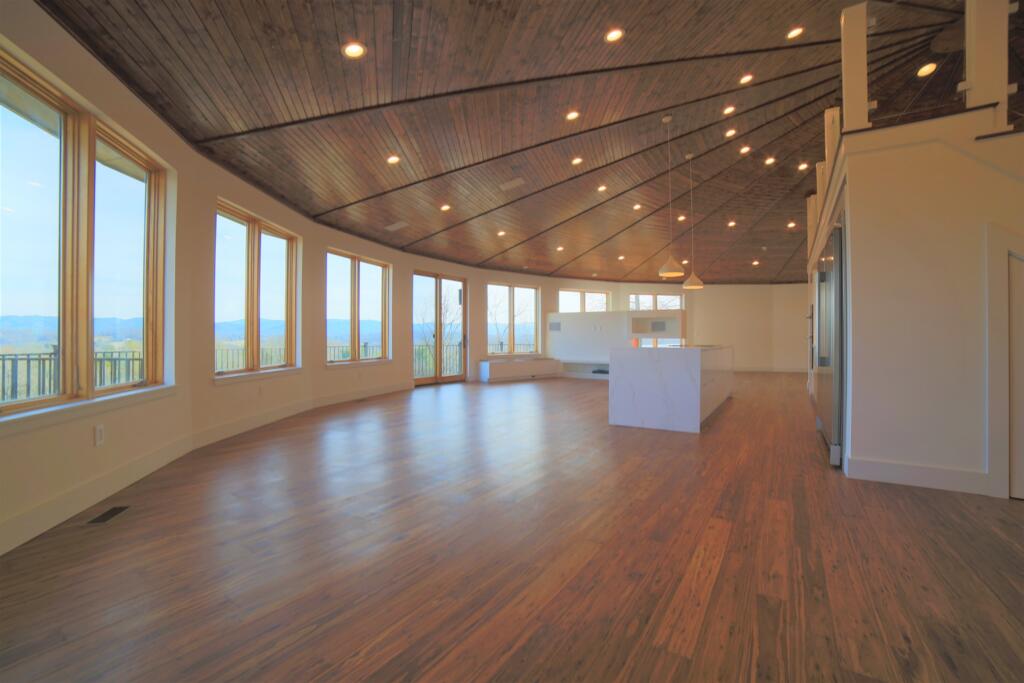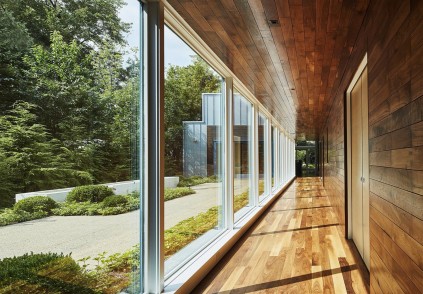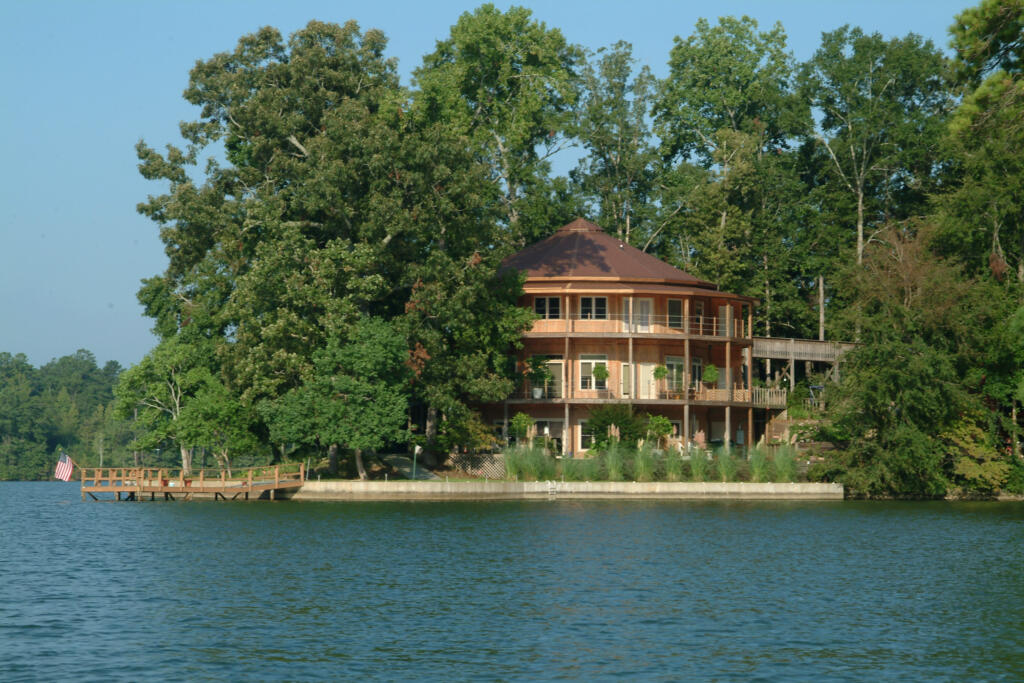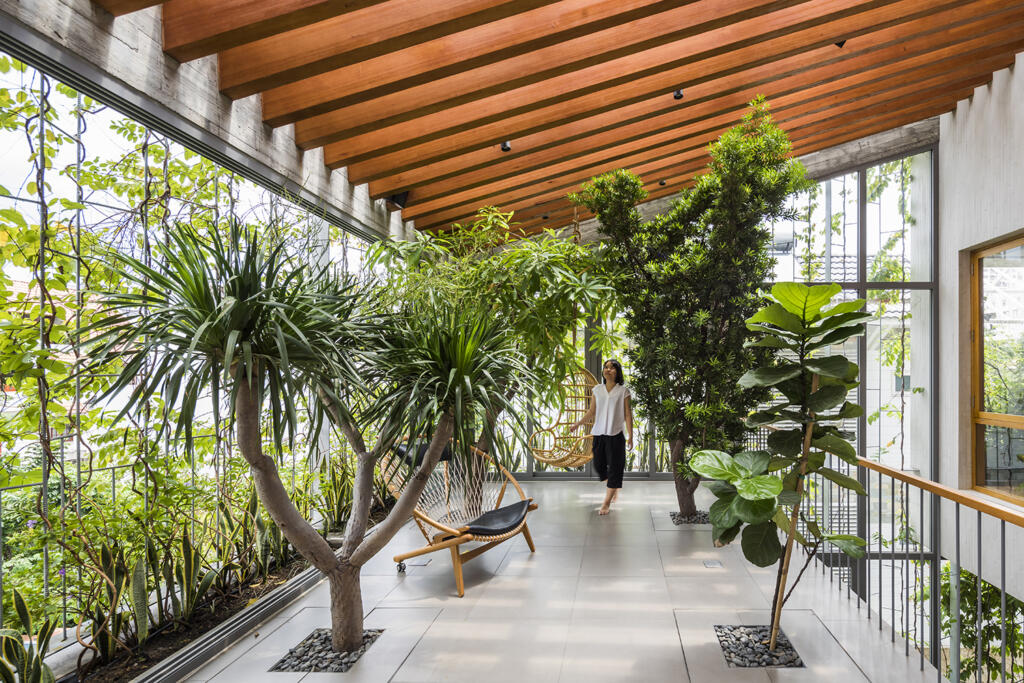
On the Lake Homes blog, we often cover interior design trends related to lake living. Hygge, a Danish concept defined simplistically as “coziness,” evokes comfort in the home by using warm tones, candles, fireplaces, and blankets. Another recent trend is wabi-sabi design, a Japanese concept that focuses on finding beauty in imperfections. Natural materials like driftwood, personally significant artwork, and repaired pottery are all emblematic of wabi-sabi. Each of these trends reflects the spirit of lake living in different ways.
Today, we’re introducing a new concept for lake lovers to adopt in their homes — biophilic design. Although it was introduced in the 1970s by biologist E.O. Wilson, it’s been practiced since ancient times (e.g., the rumored Hanging Gardens of Babylon). To learn more about this style, we talked with Hope McMahan, project manager at Deltec Homes in Asheville, NC. Read on for everything you need to know about biophilic design.
What is Biophilic Design?

Biophilic design is all about connecting back to nature through architecture and decor. But it’s more holistic than simply adding a few indoor plants to your lake home. McMahan explains that biophilic design can be broken down into three components. The first is the direct experience of nature (e.g., letting in more natural light, incorporating greenery). The second is the indirect experience of nature (e.g., paintings of scenery, natural colors, wood furniture). Finally, the third component is the physiological connection to nature.
McMahan clarifies, “There’s fear in nature, and at the end of the day, we’re still animals. We need to feel safe and secure in our environments.” Features like large windows play into this sense of safety, allowing you to physically witness any impending threats and rest in the security of your home’s protective qualities. In the same way, many biophilic homes expose the beams of the trusses so you can see the structures that are keeping you safe at home.
Essentially, all three components focus on enhancing our connection to the natural world. This connection, McMahan says, is one that’s often lost in traditional homes. “Biophilic design reminds us that we’re still animals, and we need to exist more like that. We can actually think about the living things in our world.”
Why Is Biophilic Design Trending Again?

According to research from the University of Vermont, more people, especially women, are turning to the outdoors for comfort these days. The resurgence of biophilic design reflects this desire for nature that has become more prominent since the rise of COVID-19. McMahon says, “During the past year, we’ve all been trapped inside. We’re experiencing this trauma together. We’re also starting to understand how our homes make us feel.”
To illustrate this point, she explains the ways in which architecture can evoke certain feelings. For example, the brutalist, concrete structure of a courthouse creates solemn, stoic vibes. By contrast, a biophilic design with wooden cabinets and expansive windows manifests a sense of peace and comfort that we’re all craving amid this global crisis. “Biophilic design is not just functional — it’s also an art,” she says.
Another reason behind biophilic design’s revival is its connection to the popular sustainability movement. Although it’s possible to practice biophilic design without being environmentally friendly, they often go hand in hand. McMahon describes biophilic architects as “the green builders before it was cool to be green.”
What Are the Benefits of Biophilic Design?

Perhaps the most apparent benefit, biophilic design is simply beautiful. By bringing the outdoors in, both literally and metaphorically, your home blends more seamlessly with the natural world. But beyond aesthetics, biophilic design also has several psychological benefits. Many research studies have demonstrated that those who inhabit biophilic spaces experience lower stress levels and more positive moods. It also has physical health benefits. McMahon mentions the myriad of studies suggesting that patients in hospitals with biophilic design recover more quickly than those in traditional buildings. In workspaces, biophilic design is also linked to greater productivity. With all these clear benefits, what’s not to love?
How Can I Incorporate Biophilic Design in My Lake Home?

Whether you’re redesigning a home or looking for minor improvements, biophilic design can be for you. If you’re remodeling your lake home, consider a round wooden ceiling. Deltec Designs features a 360 Collection that is completely round, allowing it to withstand higher winds due to its aerodynamic frame. From a design perspective, its structure resembles a tree, eliciting a sense of biomimicry. In these round homes, be sure to install wide windows to connect the home to the landscape. At a lake house, this is especially important since the lake view is a central feature of the home.
However, you don’t have to completely rebuild in order to incorporate biophilic design into your home. Simple changes like adding indoor plants, choosing curtains with natural materials like 100% cotton, installing hardwood floors, and picking native plants can go a long way in establishing your biophilic home. The important thing is to keep it natural. “The more synthetic it is, the less we’re able to realize that it’s from the earth,” McMahon explains. If you don’t have a green thumb, fake plants or photos of plants can offer the same effect.
From the ancient Hanging Gardens to your own lake home, biophilic design is both beautiful and beneficial. We wish you luck in incorporating this trend into your home!

